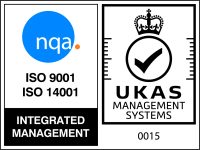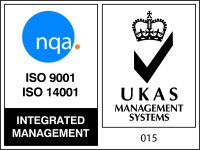Information is power and – when it comes to mitigating the risk of exposure to potentially toxic substances – power is protection. A Safety Data Sheet (SDS) plays a key part in ensuring that those handling and using hazardous materials have all the information they need to protect themselves and those around them. With this point in mind, it is key that all cleaning staff and facilities management teams are confident in reading, interpreting and acting on the information provided within an SDS.
What is a Safety Data Sheet (SDS)?
As European Cleaning Journal highlights, the SDS was ultimately borne out of a need to efficiently communicate the hazards of using or handling particular chemicals or substances. However, it explains that different countries have different legislation pertaining to the classification of chemicals and, likewise, to the risks associated with handling them. The UK’s Health and Safety Executive (HSE) adds that, in order to avoid any confusion, the United Nations developed the Globally Harmonised System of Classification and Labelling of Chemicals (GHS). The GHS offers a single system for the classification of chemicals as well as a unified method of communicating the risks associated with handling them. An SDS can be viewed as being a greater part of the GHS.
According to the HSE, “SDS are key documents in the safe supply, handling and use of chemicals. They should help to ensure that those who use chemicals in the workplace do so safely without risk of harm to users or the environment.” While an SDS is not a risk assessment, they can help cleaners and facilities teams to gauge the risk of potential hazards that may arise during the use of a particular substance.
SDS: Contents and Interpretation
Broadly speaking, ISSA explains that an SDS, “…includes information such as the properties of each chemical…”, as well as further details on the physical, health, and environmental hazards posed by a substance. The document should also feature details on safety precautions for the safe handling, storing, and transportation of a chemical. The HSE gives a comprehensive, point-by-point overview of the information that should be contained within an SDS here. Among its 16 points, the HSE states that an SDS should include details on first-aid and fire safety measures to be taken in the event of chemical exposure or combustion as well as information on how to safely dispose of a substance. Additionally, an SDS should feature an emergency contact number to connect cleaning or facilities staff with personnel who can offer further detailed information on a substance, as and when needed. An SDS can be either a paper or an electronic document.
The University of Warwick’s Health and Safety Department offers line-by-line guidance for cleaning or facilities staff looking for assistance on understanding and interpreting all 16 points of an SDS here. While these documents may seem complex at first glance, it adds that the information that they contain form an integral part of the risk assessment process. The 16 points presented on an SDS may appear different depending on the individual document, but all that matters from the perspective of the end user is that they are clearly and carefully addressed.
Who Needs an SDS?
In general, the HSE explains that an SDS should be present upon the supply of any toxic or hazardous substance and it adds that these documents are part of a wider network of legislation, known as REACH (Registration, Evaluation, Authorisation and restriction of Chemicals). The body provides a full list of the scenarios for when an SDS should be offered here. It also adds that a customer can request an SDS at any time on account of any perceived health risks.
More than just a document, an SDS is a powerful and effective risk assessment tool. By taking the time to understand and interpret an SDS, cleaners are taking an active role in their own personal protection as well as in the health and well-being of others.








